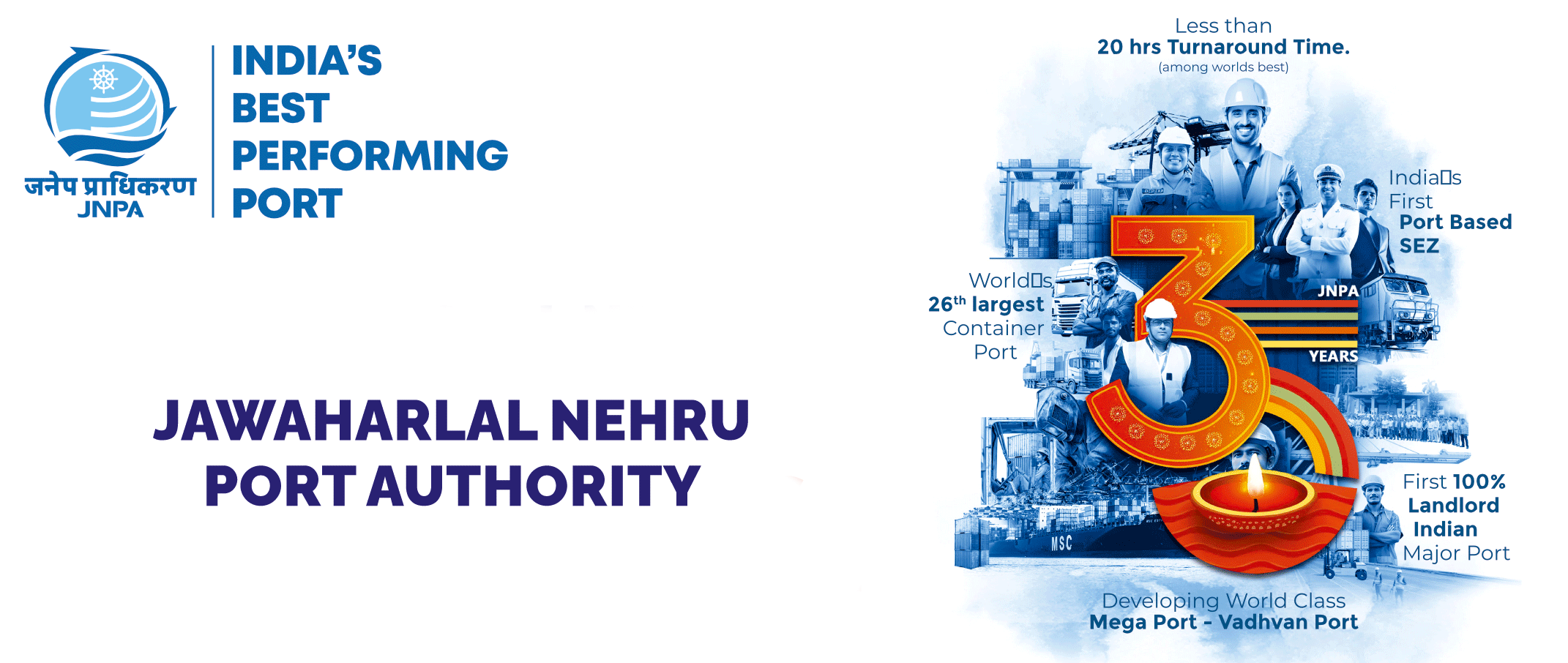TO RECIEVE EXCLUSIVE POSTS AND NEWS
Governance
India’s major ports achieve historic milestones in FY 2024-25, driving growth & global competitiveness
By IndianMandarins- 13 May 2025
664New Delhi (13.05.2025): India’s major ports have
consistently demonstrated remarkable progress over the past decade, with FY
2024-25 emerging as a milestone year in terms of cargo handling, operational
efficiency, and infrastructure modernisation. In FY 2024-25, major ports registered an impressive annual
growth rate of 4.3 per cent in cargo handling, increasing from 819 million
tonnes in FY 2023-24 to ~855 million tonnes in FY 2024-25. This growth
highlights the resilience and capacity of major ports in accommodating rising
trade volumes. The increase in traffic was driven by higher container
throughput (10 per cent), fertilizer cargo handling (13 per cent), POL cargo
handling (3 per cent), and handling of miscellaneous commodities (31 per cent)
compared to the previous fiscal year. Among commodities handled at major ports, Petroleum, Oil,
and Lubricants (POL) —including crude, petroleum products, and LPG/LNG — led
the charts with a volume of 254.5 million tonnes (29.8 per cent), followed by
container traffic at 193.5 million tonnes (22.6 per cent), coal at 186.6
million tonnes (21.8 per cent), and other cargo categories such as iron ore,
pellets, fertilizers, and more in FY 2024-25. For the first time in the history of Major Ports, the
Paradip Port Authority (PPA) and Deendayal Port Authority (DPA) surpassed the
150-million-tonne cargo handling mark, reinforcing their status as key hubs of
maritime trade and operational excellence. Meanwhile, Jawaharlal Nehru Port
Authority (JNPA) set a record by handling 7.3 million TEUs, reflecting a 13.5
per cent year-on-year growth. In FY 2024-25, Indian ports collectively allocated 962 acres
of land for port-led industrialization, projected to generate an income of
₹7,565 crore in FY 2024-25. Furthermore, lessees are expected to make future
investments of ₹68,780 crore on the allotted land, reaffirming investor
confidence in port-led development. Private sector participation has been
instrumental in this transformation, with investments in PPP projects at Major
Ports increasing threefold, from ₹1,329 crore in FY 2022-23 to ₹3,986 crore in
FY 2024-25, highlighting strong investor confidence. Operational performance continued to improve in FY 2024-25,
with Pre-Berthing Detention (PBD) Time (on port account) improving by ~36 per
cent compared to FY 2023-24. Financially, Major Ports witnessed an 8 per cent
increase in total income in FY 2024-25, rising to ₹24,203 crore from ₹22,468
crore in FY 2023-24. Similarly, operating surplus grew 7 per cent to ₹12,314
crore in FY 2024-25 from ₹11,512 crore in FY 2023-24. Between FY 2014-15 and FY 2024-25, cargo volumes surged from
581 million tonnes to approximately 855 million tonnes, reflecting a robust
Compound Annual Growth Rate (CAGR) of ~4 per cent. Containerized cargo saw a
remarkable 70 per cent increase over the decade—from 7.9 million TEUs in FY
2014-15 to 13.5 million TEUs in FY 2024-25. Conventional commodities such as
coal, fertilizers, iron ore, and POL also witnessed significant growth over the
last 10 years.
Readers' Choice
Will IS Chahal be the next Maharashtra Chief Secretary? 27 Jun 2025
Delhi: Major bureaucratic reshuffle includes two Additional CSs 26 Jun 2025
ACB summons senior IAS Arvind Kumar 26 Jun 2025
CAT rules allocation of Telangana cadre to IAS Amrapali Kata 26 Jun 2025
Jharkhand Govt devices alternative ways for DGP 26 Jun 2025
India’s major ports achieve historic milestones in FY 2024-25, driving growth & global competitiveness
By IndianMandarins - 2025-05-13 12:20:00

New Delhi (13.05.2025): India’s major ports have consistently demonstrated remarkable progress over the past decade, with FY 2024-25 emerging as a milestone year in terms of cargo handling, operational efficiency, and infrastructure modernisation.
In FY 2024-25, major ports registered an impressive annual growth rate of 4.3 per cent in cargo handling, increasing from 819 million tonnes in FY 2023-24 to ~855 million tonnes in FY 2024-25. This growth highlights the resilience and capacity of major ports in accommodating rising trade volumes. The increase in traffic was driven by higher container throughput (10 per cent), fertilizer cargo handling (13 per cent), POL cargo handling (3 per cent), and handling of miscellaneous commodities (31 per cent) compared to the previous fiscal year.
Among commodities handled at major ports, Petroleum, Oil, and Lubricants (POL) —including crude, petroleum products, and LPG/LNG — led the charts with a volume of 254.5 million tonnes (29.8 per cent), followed by container traffic at 193.5 million tonnes (22.6 per cent), coal at 186.6 million tonnes (21.8 per cent), and other cargo categories such as iron ore, pellets, fertilizers, and more in FY 2024-25.
For the first time in the history of Major Ports, the Paradip Port Authority (PPA) and Deendayal Port Authority (DPA) surpassed the 150-million-tonne cargo handling mark, reinforcing their status as key hubs of maritime trade and operational excellence. Meanwhile, Jawaharlal Nehru Port Authority (JNPA) set a record by handling 7.3 million TEUs, reflecting a 13.5 per cent year-on-year growth.
In FY 2024-25, Indian ports collectively allocated 962 acres of land for port-led industrialization, projected to generate an income of ₹7,565 crore in FY 2024-25. Furthermore, lessees are expected to make future investments of ₹68,780 crore on the allotted land, reaffirming investor confidence in port-led development. Private sector participation has been instrumental in this transformation, with investments in PPP projects at Major Ports increasing threefold, from ₹1,329 crore in FY 2022-23 to ₹3,986 crore in FY 2024-25, highlighting strong investor confidence.
Operational performance continued to improve in FY 2024-25, with Pre-Berthing Detention (PBD) Time (on port account) improving by ~36 per cent compared to FY 2023-24. Financially, Major Ports witnessed an 8 per cent increase in total income in FY 2024-25, rising to ₹24,203 crore from ₹22,468 crore in FY 2023-24. Similarly, operating surplus grew 7 per cent to ₹12,314 crore in FY 2024-25 from ₹11,512 crore in FY 2023-24.
Between FY 2014-15 and FY 2024-25, cargo volumes surged from 581 million tonnes to approximately 855 million tonnes, reflecting a robust Compound Annual Growth Rate (CAGR) of ~4 per cent. Containerized cargo saw a remarkable 70 per cent increase over the decade—from 7.9 million TEUs in FY 2014-15 to 13.5 million TEUs in FY 2024-25. Conventional commodities such as coal, fertilizers, iron ore, and POL also witnessed significant growth over the last 10 years.




























